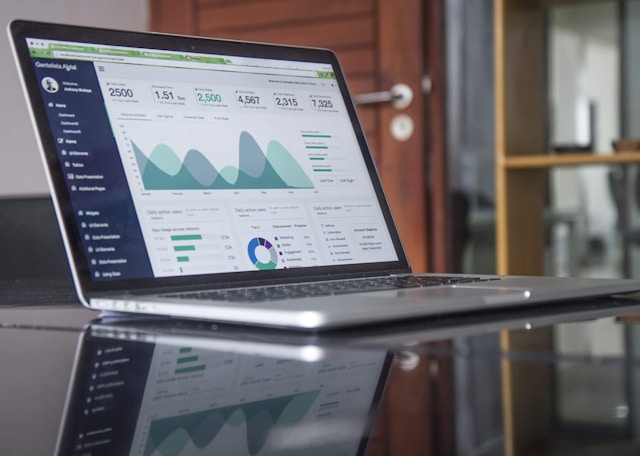
Customer relationship management (CRM) software is a crucial tool for small businesses in any industry. These platforms help you track your sales, churn rate and other customer interactions across their entire life cycle. This insight is a huge advantage in marketing and sales, and Internet of Things (IoT) connectivity can take it even further.
Integrating the IoT into your CRM strategy could allow you to use extensive data for more in-depth customer insights. Here are five steps to help you along that journey.
1. Determine What Data You Need
“While it’s true that more data leads to higher accuracy, too much information can make it hard to hone in on what’s most impactful.”
The first step in integrating IoT connectivity into CRM is to refine the scope of your data. While the IoT can collect a wide range of information — experts believe IoT devices will generate 79.4 zettabytes of data by 2025 — not all data points are equally valuable. While it’s true that more data leads to higher accuracy, too much information can make it hard to hone in on what is most impactful.
The data you need depends on your CRM goals. The best indicators of CRM return on investment (ROI) include customer churn rates, net promoter scores and conversion rates. By contrast, you should focus on data like foot traffic and in-store heat maps if you are trying to see where to place products for more brick-and-mortar sales.
Once you know the kinds of data to collect, you can determine the ideal IoT applications to invest in. Some may use in-store Bluetooth beacons, while others may benefit more from predictive maintenance sensors in their products.
2. Compare IoT and CRM Platforms
You can compare available solutions after deciding on an IoT use case and general data categories. There are 1,383 CRM providers in the U.S. alone, so it is essential to narrow your options before diving in too deep.
You may already use a CRM, in which you can refine your IoT solution search by looking for options you can integrate in your existing system. Start with choosing a CRM that meets your goals and budget before comparing IoT systems if you do not have one yet.
Your CRM should support your needed data formats, automate collection and reporting, integrate with existing apps and have visualization features that align with your goals. IoT solutions should stay within your budget, use a standard communication protocol and report in a usable data format.
3. Secure Your IoT Data
“IoT endpoints often lack strong built-in protections and can provide an easy way for cybercriminals to jump to more sensitive devices and data.”
One overlooked but crucial step in IoT integration is ensuring IoT system security. IoT endpoints often lack strong built-in protections and can provide an easy way for cybercriminals to access more sensitive devices and data.
Encryption is one of the most important steps — most IoT data is unencrypted, so requiring multi-factor authentication to access these devices is also crucial. Many IoT endpoints today support these features, but they are usually not on by default, so you must adjust your settings to stay safe.
Use customer reviews to judge a provider’s reputation for security before purchasing IoT devices from them. The government is working on an IoT security labeling program, which will make it easier to identify safe endpoints, but until then, you’ll have to perform this research yourself.
4. Test the Waters Before Expanding
High costs and implementation challenges are also typical among first-time IoT adopters. You can offset these by testing your IoT integration on a small scale before expanding it to other CRM processes.
Initial costs are not necessarily the biggest barrier to effective IoT integration. Instead, 90% of IoT adopters say they struggle to measure these projects’ ROI accurately. Expenses are part of that, but this gap also suggests that people aren’t connecting IoT devices to real business needs and fail to measure their impact.
You can address these challenges by starting your IoT journey where you expect it to have the most significant impact. Determine what data would most benefit your CRM, and use IoT devices to collect this information first. Measure your CRM performance before, during and after connecting it to these IoT systems. Only expand your IoT adoption when you see a positive return and can pinpoint why it helped.
5. Optimize Over Time
“You likely won’t perfect your IoT solution on your first try, and what you need most from your CRM will change over time.”
The last step in IoT CRM integration is recognizing that this is an ongoing process. You likely will not perfect your IoT solution on your first try and your needs will change over time. Consequently, you must continually adapt and optimize.
You should emerge from the first few stages with key performance indicators (KPIs) relevant to your CRM and IoT goals. Track these same KPIs over your entire project timeline to identify areas for improvement. Review your IoT-integrated CRM at least once annually to see where it has succeeded and where it may need adjustment.
Remember to review your security regularly, too. Security researchers discovered 33,000 new vulnerabilities in 2023 alone, highlighting how quickly the cybersecurity landscape evolves. Always update your IoT devices and anti-malware software to keep up with these changes.
IoT and CRM Work Together to Drive Results
IoT and CRM are a powerful combination. When you use these two tools together, you can uncover detailed insights into your customers and how to meet their changing needs.
Combining CRM and IoT solutions isn’t always easy, but the results are worth it if you do it right. Follow these steps to start your IoT integration journey today.
Also Read How Zero Trust Addresses the Unique Security Risks of IoT Devices
Discover more from reviewer4you.com
Subscribe to get the latest posts to your email.





